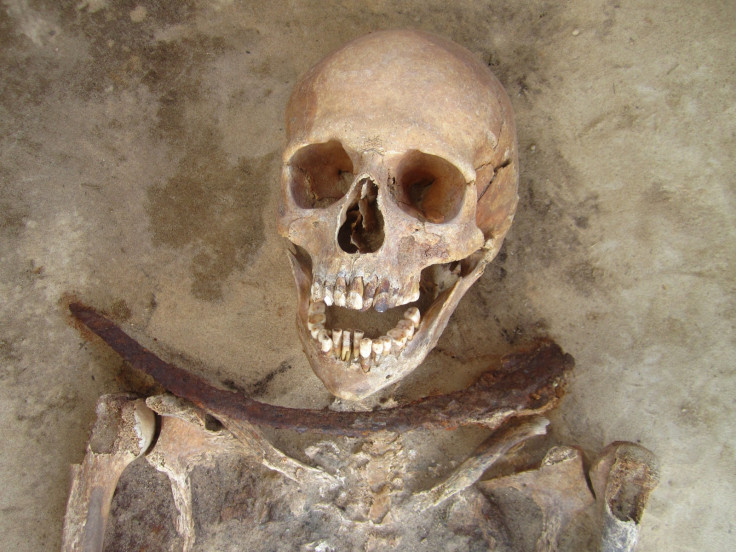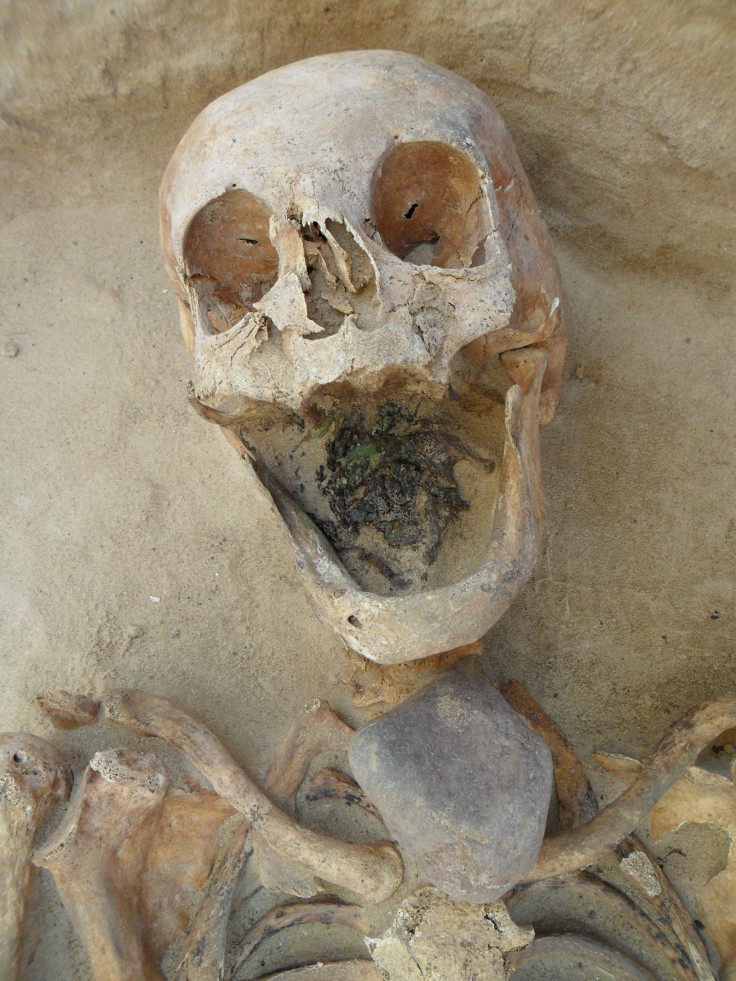Poland Vampire Graves: Mystery Burials 'Were Locals With Cholera'

Six "vampire graves" discovered in Poland contained the remains of local people who may well have died from cholera, researchers have said.
Published in the journal PLOS One, researchers from the University of South Alabama were studying a collection of graves in Drawsko Pomorskie where sickles and rocks had been placed across their bodies – a method of preventing them rising from the dead as vampires.
In 16<sup>th and 17<sup>th century Poland, apotropaic funeral traditions were used to prevent evil among those considered at risk of becoming a vampire.
Lesley Gregoricka, from University of South Alabama, told IBTimes UK this was done for a variety of reasons, including being unbaptised, having a violent death or being the first person to die in an epidemic. Previously, researchers had thought it could also be practiced on outsiders – there were waves of immigrants coming to Poland during the post-medieval period, with many non-locals coming into the community.
It was also thought these vampire graves were those of outsiders. However, scientists have now found this was not the case. Using radiogenic strontium isotope ratios from dental enamel, they found all six vampires belonged to the local community.
"We found others in the cemetery that were non-local but they were buried in a normal way, so that was something of a surprise – that all the vampires were local," Gregoricka said.

Why they were thought to be vampires, she said, was to do with lack of scientific knowledge.
Gregoricka said: "People didn't understand a lot about the world around them. For example, they didn't have any scientific understanding of infectious disease, which was a major issue during this time – we've got the black plague, we also have multiple waves of cholera striking Eastern Europe.
"These diseases were things people were really afraid of – particularly cholera, which can kill you in a matter of days or hours.
"They didn't know that it was spread through bacteria in contaminated drinking water. They had no scientific understanding of how infectious disease was spread. Because they couldn't explain it, they contributed cholera to the supernatural – specifically to vampires."
In Poland, vampire folklore has a long history. The oral tradition dates back to around the 11<sup>th century, while the first written records emerged in the 16<sup>th century.
During epidemics, people who had not necessarily experienced death on a wide scale began to see bodies decomposing for the first time. Gregoricka said this could have been the catalyst for the vampire burials. "If you have no understanding of how decomposition works, this can be a scary process," she said.
"You see bodies that are bloating - there are historic records that describe the observations of these bodies bloating from individuals who were frail and thin in life. This was interpreted not as we have a natural breakdown of bacteria and enzymes that causes our abdomen to swell, but that these individuals were feeding after they had died and that they were feeding on the living.

"We also have some evidence that as a result of that bloating process, that pressure puts pressure on our lungs after death and blood can be forced up through the mouth and nose – this is a normal process of decomposition called purging – people would observe blood around the mouths of these corpses and have no idea what was happening."
People also believed the first to die from an epidemic was likely to rise from the dead as a vampire and infect the living. As a result, they were buried with protective measures in place.
The sickle is a curved blade that was used to harvest grain – as Drawsko was a farming community, this would have been readily available.
Gregoricka said: "It was thought that by placing the sickle across the neck, if the deceased did indeed transform into a vampire and attempt to rise from its grave, the sharp blade of that sickle would remove the head and prevent that individual from coming and attacking others. This was seen as a physical restraint.
"The rock was seen in a similar way, being placed beneath the chin. It pinned the jaw closed so they wouldn't be able to bite or feed on the living."
Researchers plan to carry out further investigations of isotopes to find out more about vampire burials through north-west Poland at this time.
© Copyright IBTimes 2025. All rights reserved.





















